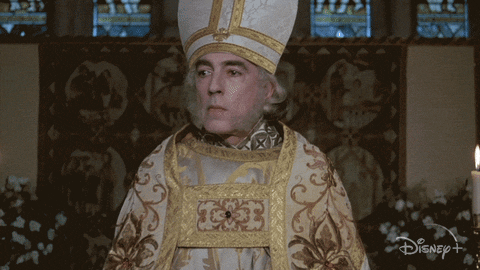The Princess Bride
S. Morgenstern's classic tale of true love and high adventure
-
www.wikidata.org/wiki/Q1935913
Databases Open Library Online stores Amazon - novel by William Goldman
- William Goldman
-
mawage-1597124143313.gif
Scene from "The Princess Bride" (1987)Credit: The Princess Bride. Fair use.Source data licensing:
Data from OpenLibrary is in the public domain.
Data from Wikidata is available under Creative Commons CC-0.
lib.reviews is only a small part of a larger free culture movement. We are deeply grateful to all who contribute to this movement.Reviews
Please sign in or register to add your own review.
An entertaining page-turner that embraces conventions while poking fun at themThe Princess Bride was only a moderate success at the box office, but since its release in 1987, it has become a cult classic. Its lovable characters left an indelible impression on many, and the film has bestowed us several pop culture quotes and assorted GIFs, e.g.:
-
“Inconceivable!” — “You keep using that word. I do not think it means what you think it means.“
-
“Hello, my name is Inigo Montoya. You killed my father. Prepare to die.“
-
“You seem a decent fellow… I hate to kill you. “ — “You seem a decent fellow… I hate to die. “
This one’s a classic, too:

The movie is based on a book, and if William Goldman is to believed, that book was written by a Florinese author named S. Morgenstern a long time ago, re-released in translated and abridged form by Goldman in 1973. Of course, he is most definitely not to be believed—but the fake origin story adds a charming narrative layer to Goldman’s novel.
At its heart, The Princess Bride is a comedic story of true love between Buttercup, a farmer’s daughter, and Westley, a farmhand. Their love is imperiled by the machinations of one Prince Humperdinck and his sadistic right-hand man, Count Rugen. Along the way, Buttercup and Westley cross paths with Inigo Montoya (a Spanish master swordsman), Fezzik (a Turkish giant), and Vizzini (a Sicilian criminal genius)
Compared with the movie, the book gives Inigo a proper backstory, helping lend emotional weight to the final confrontation between Inigo and the six-fingered man who killed his father. We also learn more about Fezzik the giant, although it’s a fairly worn out tale (the sweet, gentle giant who reluctantly learns how to use his strength).
But what of Buttercup? While she gets to boss Westley around for a bit in the beginning, she is quickly reduced to the traditional traits of princesses: beauty and devotion. One can argue that the book takes its stereotypes to such ridiculousness that they lose normative power, but that argument only goes so far.
Still, what saves The Princess Bride from becoming conventional and boring is its sense of humor. From the Rodents of Unusual Size (R.O.U.S.) to the Zoo of Death, from Miracle Max and his questionable cures to Goldman’s tall tales about S. Morgenstern, the book is an entertaining page-turner.
Modern editions include the first chapter of Buttercup’s Baby, a sequel to The Princess Bride that was unfortunately never completed (Goldman died in 2018). It gives us a small glimpse of further adventures that could have been.
Not everyone will adore The Princess Bride as much as its many devoted fans do, but if you are a lover of adventure and comedy, it may well earn a special place on your bookshelf and in your heart, or the heart of a smaller human you read it to.
-
